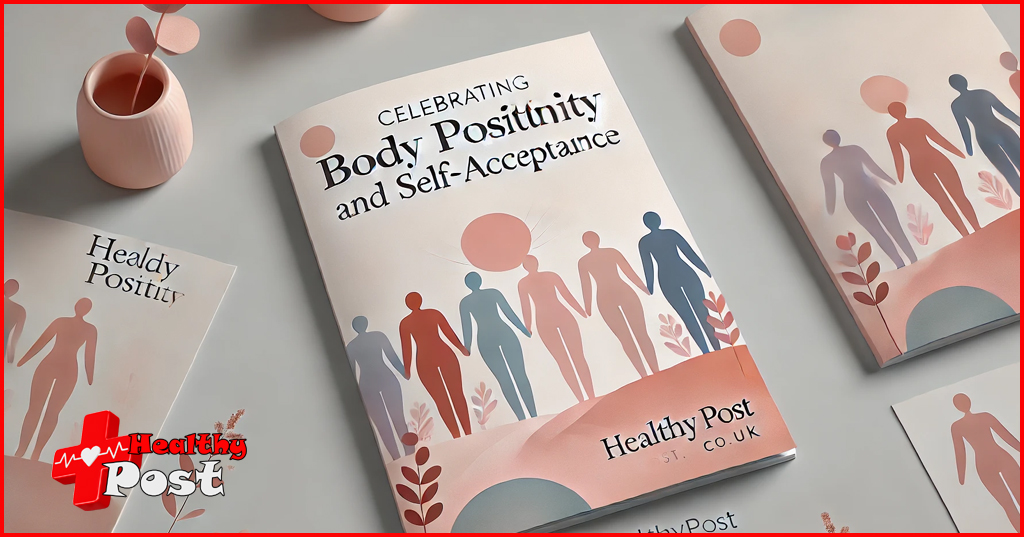
Innie vs Outie Vagina: Celebrating All Types of Female Anatomy
Every woman’s body is unique, including the appearance of the vagina. The terms “innie” and “outie” vagina describe different types of external genitalia. Both types are natural and completely normal. This article will explore and compare Innie vs Outie Vagina: Celebrate and understand the diversity in female anatomy. Learn about the importance of body positivity. We will also discuss why it is important to embrace body diversity. Many women feel insecure due to unrealistic beauty standards. However, understanding that every shape is normal can boost confidence and self-acceptance.
An innie vagina refers to a vulva where the labia minora (inner lips) are less visible. The labia majora (outer lips) cover most of the inner structures. This type is also called a “hidden” or “concealed” vulva.
An outie vagina means the labia minora extend beyond the labia majora. This is also known as a “prominent” or “visible” vulva. Both types are completely natural and common.

Here is a simple comparison:
| Feature | Innie Vagina | Outie Vagina |
|---|---|---|
| Labia minora visibility | Less visible | More visible |
| Common perception | More “hidden” | More “prominent” |
| Prevalence | Common | Common |
There is no “perfect” vagina shape. Each woman’s body is uniquely shaped due to genetics and hormones. It is important to embrace and celebrate these differences.
By the end of this article, you will learn to appreciate the diversity of female anatomy. Every shape and size is beautiful, and no one should feel ashamed of their body.
What Is an Innie Vagina?
An innie vagina refers to a vulva where the labia minora (inner lips) are mostly hidden within the labia majora (outer lips). This gives the appearance of a smoother, more concealed genital area. It is a completely natural variation of female anatomy.
Common Characteristics of an Innie Vagina
- Less visible labia minora – The inner lips do not extend beyond the outer lips.
- Smoother appearance – The vulva looks more closed or compact.
- Genetic variation – The shape and size of the vulva are influenced by genetics and hormones.
- No impact on function – An innie vagina does not affect sexual pleasure, hygiene, or health.
Statistical Prevalence
Studies suggest that the majority of women (around 50-60%) have an innie vagina. However, variations exist, and no one shape is considered “normal” or “ideal.” The appearance of the vulva changes over time due to aging, childbirth, and hormonal shifts.
Common Myths and Misconceptions
| Myth | Truth |
|---|---|
| An innie vagina is “better” than an outie. | No type is superior. Both are normal and healthy. |
| Only young women have innie vaginas. | Vulva shapes can change over time but remain natural. |
| An innie means better hygiene. | Hygiene depends on cleanliness, not vulva shape. |
| Innie vaginas are rare. | They are common and occur in many women worldwide. |
The shape of the vulva does not define beauty, femininity, or health. Every woman’s body is unique, and diversity should be celebrated. An innie vagina is just one of many natural variations of female anatomy.
What Is an Outie Vagina?

An outie vagina refers to a vulva where the labia minora (inner lips) extend beyond the labia majora (outer lips). This gives the vulva a more open or prominent appearance. Like an innie vagina, an outie is completely natural and normal.
Common Characteristics of an Outie Vagina
- Visible labia minora – The inner lips extend past the outer lips.
- More pronounced appearance – The vulva may appear more open or textured.
- Genetic and hormonal factors – Labia size and shape are influenced by genetics, hormones, and life changes like childbirth.
- No impact on health – An outie vagina does not affect hygiene, sensitivity, or sexual pleasure.
Statistical Prevalence
Research suggests that 40-50% of women have an outie vagina. It is as common as an innie and varies by individual. Factors like puberty, hormones, and aging can influence the size and shape of the labia over time.
Common Myths and Misconceptions
| Myth | Truth |
|---|---|
| An outie vagina is abnormal. | It is completely normal and natural. |
| Only older women have outie vaginas. | Labia size varies at all ages and is influenced by genetics. |
| An outie means poor hygiene. | Cleanliness depends on personal hygiene, not vulva shape. |
| An outie affects sexual pleasure. | Labia size does not impact sensitivity or function. |
The shape of the vulva is unique for every woman, just like facial features or body type. There is no “perfect” shape, and all variations should be celebrated. An outie vagina is simply another natural and beautiful expression of female anatomy.
Anatomy and Physiology of the Female Genitalia
The female genitalia consist of external and internal structures. The external genitalia, known as the vulva, include the clitoris, labia majora, labia minora, and vaginal opening. These structures play roles in protection, sensation, and reproduction.
Key Structures
- Clitoris – A highly sensitive organ with thousands of nerve endings. It provides pleasure and extends internally.
- Labia Majora – The outer lips that protect internal structures. They vary in size and shape.
- Labia Minora – The inner lips that may be visible (outie vagina) or hidden (innie vagina). They protect the vaginal opening.
- Vaginal Opening – The entrance to the vagina, allowing for menstruation, intercourse, and childbirth.
Normal Variations in Appearance
The size, shape, and color of these structures differ among women. Some have longer or shorter labia, while others have more prominent or hidden features. These differences are completely normal and do not affect function.
Every woman’s genitalia are unique and natural. There is no “ideal” look, and all variations should be embraced. Understanding anatomy helps in self-acceptance, health awareness, and confidence.
Societal Perceptions and Media Influence
Society and media have long shaped beauty standards, including perceptions of female genitalia. Unrealistic portrayals in advertising, pornography, and pop culture create narrow beauty ideals, leading many women to feel insecure about their bodies.
Media Influence on Female Genitalia Perception
Mainstream media often presents a limited view of what is considered “normal.” Many images depict vulvas with small, symmetrical labia, reinforcing the idea that an innie vagina is more “desirable.” This misrepresentation leads to self-consciousness and even an increase in cosmetic surgeries like labiaplasty.
Historical and Cultural Perspectives
Different cultures have varied attitudes toward female genitalia:
- Ancient cultures embraced natural diversity, often depicting varied vulva shapes in art.
- Modern Western beauty standards promote a more uniform appearance.
- Some cultures link genital appearance to femininity or purity, affecting women’s self-esteem.
Impact of Pornography and Popular Culture
Pornography often filters and alters images, showing only a limited range of genital shapes. Many women compare themselves to these unrealistic portrayals, leading to shame, anxiety, and body dissatisfaction.
Addressing Stigma and Promoting Body Positivity
Educating women about normal genital diversity is key to reducing stigma. Body positivity movements encourage self-acceptance and challenge unrealistic standards. Celebrating all body types helps women feel confident and empowered in their natural anatomy.
The Impact of Innie vs. Outie Labels
Labeling female genitalia as “innie” or “outie” can affect self-esteem and body image. Many women feel pressured to fit a certain standard, often influenced by media, culture, and social expectations. These labels can create unnecessary comparisons and insecurities.
Psychological Impact on Self-Esteem
Women with an outie vagina may feel self-conscious due to unrealistic beauty standards, while those with an innie vagina might feel pressured to conform to an idealized look. This can lead to body dissatisfaction, anxiety, and even seeking cosmetic procedures.
Personal Anecdotes and Testimonials
Many women have shared their experiences:
- Emma, 27: “I always thought something was wrong with me because I didn’t look like models in magazines. Now, I know every body is unique.”
- Sophia, 30: “Learning that outies are normal helped me embrace my body. We need more education on this.”
The Role of Education in Reducing Stigma
Teaching young women about genital diversity can help break myths and promote self-acceptance. Schools, health professionals, and social media should focus on body positivity rather than unrealistic ideals. Understanding that all shapes are normal empowers women to feel confident in their bodies.
Medical Perspective
Doctors agree that both innie and outie vaginas are completely normal variations of female anatomy. There is no medical reason to prefer one over the other, as both function the same way and do not impact health.
What Doctors Say About Innies and Outies
Medical experts emphasize that labia size, shape, and visibility vary naturally. These differences are influenced by genetics, hormones, and aging. Having an innie or outie vagina does not affect fertility, sexual pleasure, or hygiene.
Addressing Concerns About Health and Hygiene
Some women worry that an outie vagina is harder to clean, but this is a myth. Good hygiene practices, such as gentle washing with water and mild soap, keep the vulva healthy regardless of shape. The vagina is self-cleaning, and excessive washing can disrupt its natural balance.
When to Consult a Healthcare Professional
While innies and outies are normal, medical attention is needed if you experience:
- Pain, swelling, or irritation in the genital area.
- Unusual discharge or persistent itching.
- Lumps, sores, or sudden changes in labia appearance.
Embracing and Celebrating Diversity
Every woman’s body is unique, and that includes the shape and appearance of the vulva. Embracing this diversity is essential for building confidence, self-acceptance, and a positive body image.
Encouraging Body Positivity
The body positivity movement encourages women to love and accept their bodies as they are. Understanding that both innie and outie vaginas are normal helps reduce shame and stigma. Social media campaigns, educational content, and personal stories are powerful tools for promoting self-love and acceptance.
Resources for Further Education and Support
Women seeking more information or support can explore:
- Medical websites like the American College of Obstetricians and Gynecologists (ACOG).
- Body positivity organizations like The Body Positive and Scarleteen.
- Online communities where women share experiences and encourage self-acceptance.
- Books and podcasts that discuss body diversity and sexual health.
Promoting Open and Positive Conversations
Talking openly about female anatomy helps break myths and reduce unnecessary shame. Encouraging discussions in schools, families, and media creates a supportive environment where women feel empowered and confident in their bodies.
Diversity should be celebrated, not judged. Every woman deserves to feel beautiful and accepted, no matter her shape or size.
Conclusion
Every woman’s body is unique, and that includes the appearance of the vulva. The terms innie and outie vagina simply describe natural variations in anatomy. Neither type is better, healthier, or more desirable than the other.
Throughout this article, we have explored the differences between innies and outies, common myths, societal perceptions, and medical perspectives. We have also highlighted the importance of body positivity, self-acceptance, and open conversations about female anatomy.
It is essential to reject unrealistic beauty standards and embrace body diversity. No two women are the same, and every shape is normal. Feeling confident and comfortable in your own skin is far more important than conforming to societal expectations.
We encourage every woman to celebrate her body, educate herself about normal genital diversity, and support open discussions that promote self-love and acceptance. Your body is beautiful just as it is—embrace it with confidence and pride.


2 thoughts on “Innie vs Outie Vagina: Celebrating All Types of Female Anatomy”